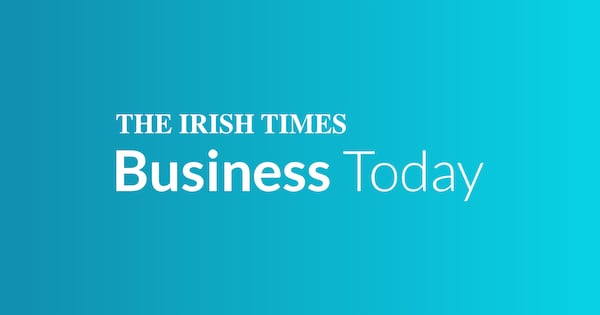The next financial crisis is coming and this time it will be a sovereign debt crisis. Not my words but those of German chancellor Friedrich Merz.
Speaking before the German election in February, the one that elevated him to the top job, Merz warned that governments had taken on too much debt.
He noted that several EU states, including France, Italy and Spain, now had debts that were bigger than the size of their annual economic output.
The French government collapsed last year while trying to push through a €60 billion austerity budget in an attempt to rectify the problem.
Merz could have added the United Kingdom to that financial risk list. British prime minister Keir Starmer’s government is tearing itself apart trying to put the public finances on a more sustainable path, fearful of another bond market bust-up like the one that sunk former Tory prime minister Liz Truss.
And then there is the United States and Donald Trump’s “big beautiful tax-cutting Bill”, the biggest such Bill in US history, which is expected to add at least $3 trillion (€2.6 trillion) to the country’s already eye-watering $37 trillion debt pile.
Brewing fiscal crises are everywhere, stoking political tensions and populist backlashes
This level of debt is bearing down on Washington like an asteroid, threatening the US’s status as the world’s backstop economy.
The founder of the world’s biggest hedge fund and author of a new book, How Countries Go Broke, The Big Cycle (which Minister for Finance Paschal Donohoe is reading), Ray Dalio believes the US is at an inflection point.
[ Has Fingal County Council found a solution to our housing crisis?Opens in new window ]
On the current trajectory, the interest payments on its national debt will exceed $1 trillion by 2026.
Brewing fiscal crises are everywhere, stoking political tensions and populist backlashes – except in the plush, stucco-laden halls of the Department of Finance in Dublin, where a relative calm prevails.

The Juggle: the issues facing women with young children when balancing childcare and their careers
Officials in Merrion Street operate at one remove from the financial zeitgeist. Their dilemma is not where to get the money but what to do with it.
Since 2015, they’ve been love-bombed with tax receipts from corporate America.
About €156 billion of corporate tax revenue has flowed into the Irish exchequer in just 10 years (including €11 billion of Apple tax money last year). A further €30 billion is expected this year.
But just €16 billion of this tax gold rush, less than 10 per cent if you include the 2025 receipts, will have been saved by the end of this year (in the State’s two sovereign wealth funds).
The current crop of leaders might like to distance themselves from former Fianna Fáil minister for finance Charlie McCreevy’s school of accountancy – “if I have it, I’ll spend it”, he famously quipped. But the statistics do not lie.
So, where has this financial largesse gone?
According to the Irish Fiscal Advisory Council (Ifac), there was one-off spending on the pandemic of €27.2 billion plus an additional €7.7 billion spent on cost-of-living supports in the last three budgets, adding up to €34.9 billion.
The department disputes Ifac’s numbers, claiming the outlay on these crises was €47 billion. There is disagreement on what constitutes temporary and permanent spending increases.
But most of the excess receipts from corporate tax have disappeared into the budgetary ether, in some cases to paper over cracks in the State’s health budget.
Since 2015, the Republic’s population has grown by almost 15% to 5.4m
Donohoe can legitimately point to the fact that the State, the population and the draw on public services have grown substantially, requiring more budgetary resources.
Since 2015, the Republic’s population has grown by almost 15 per cent 5.4 million.
He will argue that supporting workers, households and businesses during the pandemic and the subsequent cost-of-living crisis is precisely why the Irish economy is continuing to perform strongly and why unemployment remains anchored at a multidecade low of 4 per cent.
The State’s healthy cash balance has also been used to keep a lid on our national debt (€218 billion at the end of last year), a metric that has ballooned in other countries.
But many economists, looking enviously at Norway’s colossal $1.8 trillion sovereign wealth fund, still feel the Government’s budgetary arithmetic is loose and want more of this windfall saved, fearful that it can’t be relied on indefinitely.
The International Monetary Fund warned this week that the big risk for the Republic in this period of trade fragmentation was not tariffs but “foreign direct investment relocations”. In other words, a big multinational jumping ship.
Based on the department’s measurements, the windfall element of this corporate tax bonanza amounts to approximately €70 billion over 10 years.
Saving that amount when the State has such a conspicuous infrastructural deficit would be a difficult political sell.
That said, the Irish economy is running close to capacity and pushing too much money into the system all at once, no matter how noble the ambition, could overheat the economy, inflating prices in the process.
Norway’s sovereign wealth fund was in part established to shield that economy from the distortionary effects of ‘supernormal tax receipts’
The high cost of living here is, at least in part, linked to the large flow of money into the domestic economy from multinationals.
Norway’s sovereign wealth fund was in part established to shield that economy from the distortionary effects of “supernormal tax receipts”.
Unlike here, Norway’s war chest is locked away from governments that might be tempted to weave it into their day-to-day spending plans.
Saving more in the short term is not only necessary but will give us a potentially transformational level of wealth in the long term.













